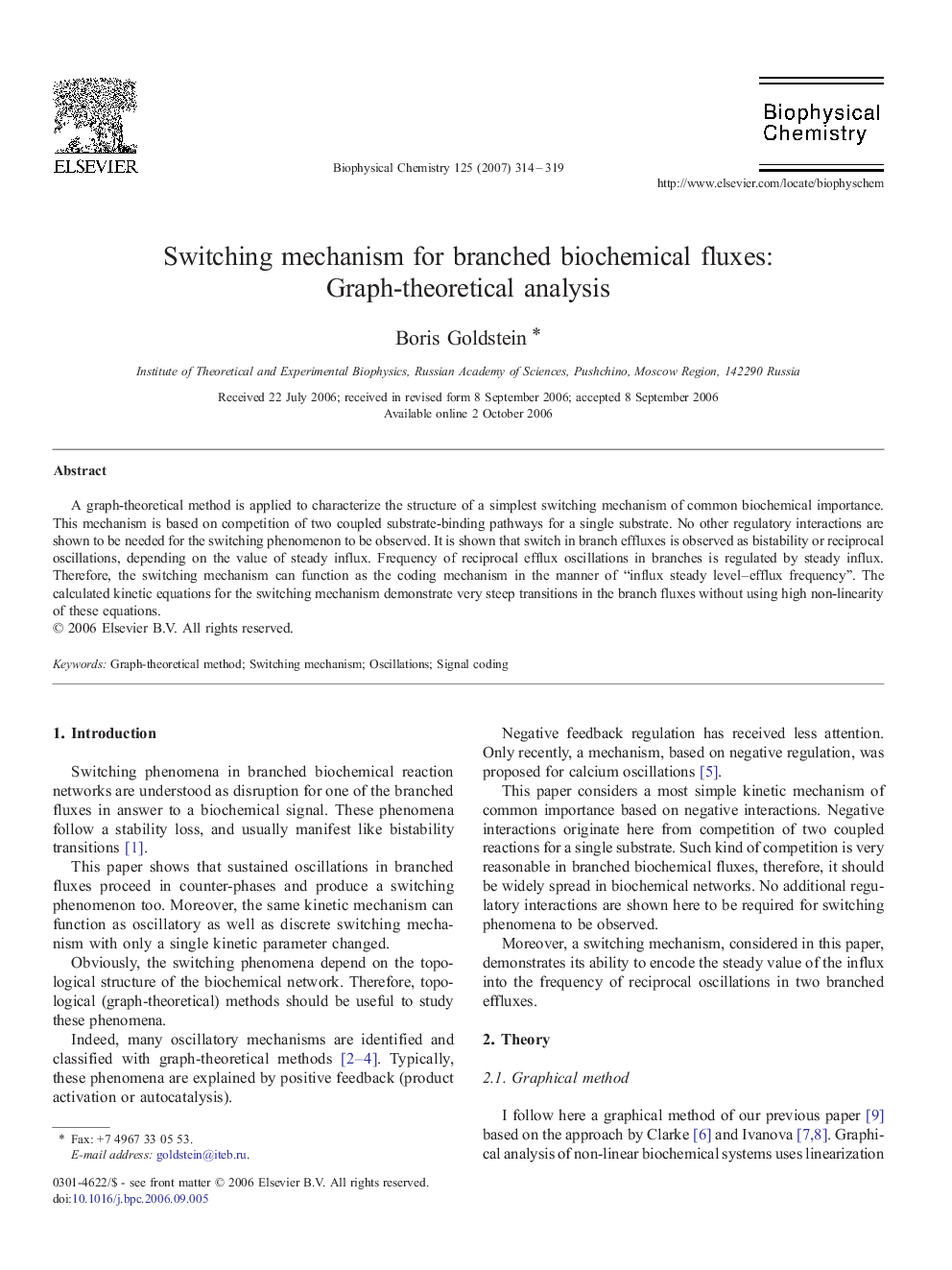| Article ID | Journal | Published Year | Pages | File Type |
|---|---|---|---|---|
| 5372283 | Biophysical Chemistry | 2007 | 6 Pages |
A graph-theoretical method is applied to characterize the structure of a simplest switching mechanism of common biochemical importance. This mechanism is based on competition of two coupled substrate-binding pathways for a single substrate. No other regulatory interactions are shown to be needed for the switching phenomenon to be observed. It is shown that switch in branch effluxes is observed as bistability or reciprocal oscillations, depending on the value of steady influx. Frequency of reciprocal efflux oscillations in branches is regulated by steady influx. Therefore, the switching mechanism can function as the coding mechanism in the manner of “influx steady level-efflux frequency”. The calculated kinetic equations for the switching mechanism demonstrate very steep transitions in the branch fluxes without using high non-linearity of these equations.
